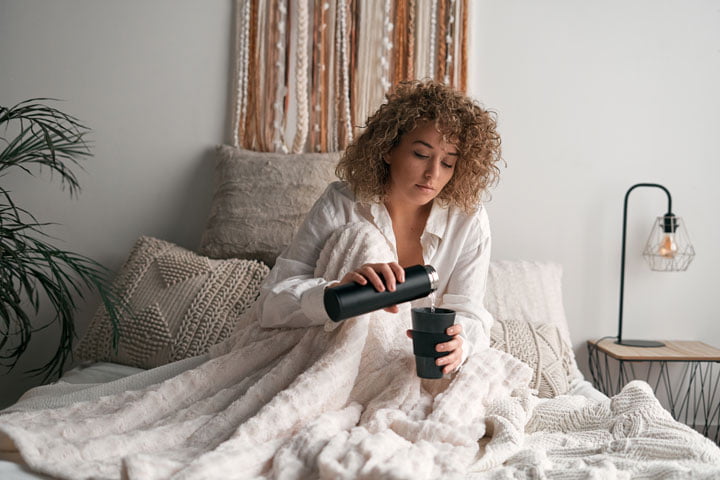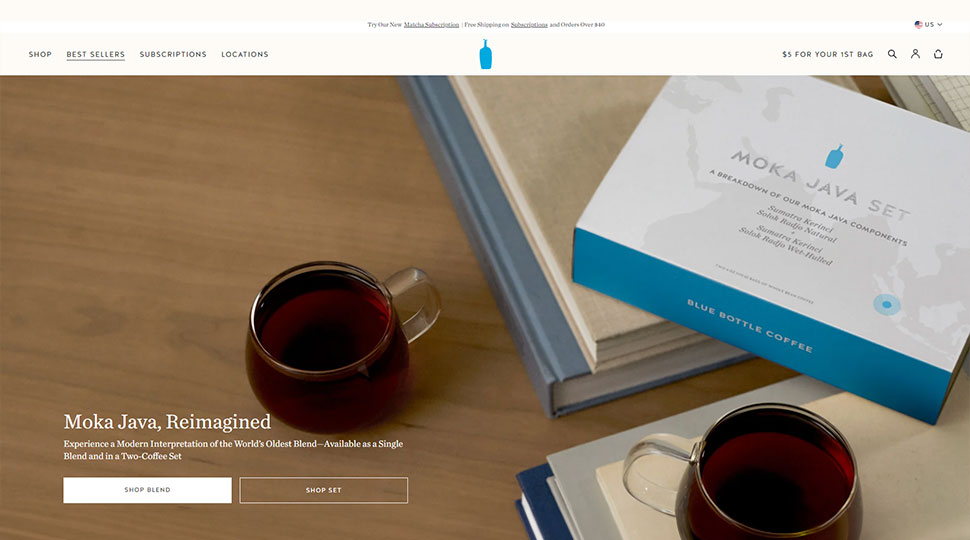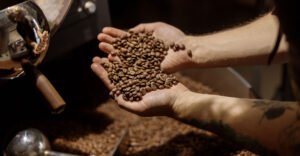Incorporating coffee into your daily routine is more than just a habit; it’s a delightful ritual. This article explores the essence of home brewing coffee and its importance, highlighting the advantages of home coffee brewing with top-rated beans.
Discover how to master the art of home coffee brewing while enjoying the perfect cup, as we unveil the secrets behind home coffee brewing and top-rated coffee beans.

Benefits of Brewing Coffee at Home: Save on Costs and Customize Your Blend
When it comes to enjoying a daily cup of coffee, you can’t ignore the allure of brewing it in the comfort of your home. Not only does this practice offer the pleasure of a freshly brewed cup at your fingertips, but it also provides several substantial advantages. Let’s explore the benefits of home coffee brewing, focusing on the cost savings and the unmatched ability to customize your coffee to suit your unique taste preferences.
Cost Savings: The Financial Perks of Home Coffee Brewing
In an era where every penny counts, brewing your coffee at home can significantly impact your wallet in a positive way. When you add up the cost of daily trips to your local coffee shop or buying pre-brewed coffee, the expenses can quickly accumulate. On the other hand, brewing your coffee at home proves to be a cost-effective choice.
You’ll not only save on the base cost of coffee but also on the additional expenses like service charges, tips, and fuel to reach your favorite coffee spot. Investing in quality coffee beans for home brewing may seem like an upfront cost, but it’s a one-time investment that offers a great return over time. With a little budgeting, you’ll find that the price per cup becomes a fraction of what you’d spend at the cafe, all while enjoying a premium cup of coffee.
In this aspect, home coffee brewing holds the key to unlocking significant financial benefits.
Customize Your Blend: Tailoring Coffee to Your Tastes and Preferences
One of the most alluring aspects of home coffee brewing is the ability to craft a cup of coffee that perfectly aligns with your unique taste preferences. Coffee enthusiasts often have specific flavor profiles, roast levels, and brewing methods they adore, and brewing coffee at home allows you to experiment and refine your coffee to match your palate.
With the freedom to choose from a variety of beans, you can opt for top-rated coffee beans that best suit your taste. You can explore different origins, from the bright and fruity flavors of Ethiopian beans to the rich and nutty notes of Brazilian coffee. Additionally, you can fine-tune your coffee’s roast level, grinding consistency, and brewing time to create a personalized brew that caters to your exact liking. Whether you prefer a bold and dark roast or a delicate and light roast, your home coffee setup puts you in control of your coffee destiny.
And, if you have dietary restrictions or health considerations, you can choose organic or decaffeinated beans, ensuring that your daily brew aligns with your well-being goals. Top-rated coffee beans become your guiding star as you explore the vast world of coffee customization.
How To Brew The Perfect Cup Of Coffee At Home: Unleash Your Inner Barista
Now that you’re convinced of the benefits of brewing coffee at home, it’s time to dive into the art of crafting the perfect cup. There are essential steps and knowledge required to brew your coffee like a seasoned barista. The journey to successful home coffee brewing begins with selecting top-rated coffee beans that will be the foundation of your ideal brew.
Choose the Best Beans for You: A World of Flavors Awaits
When you embark on your home coffee brewing adventure, the first crucial step is choosing the right beans. The world of coffee offers a myriad of options, and to find the perfect match for your taste buds, you need to consider various factors. Let’s jump into what you should look for when selecting beans:

Origin: Coffee beans are grown in regions worldwide, each imparting unique flavors. For instance, Ethiopian beans are known for their fruity and floral notes, while Colombian beans offer a balanced, medium-bodied cup. Knowing the origin of your beans helps you tailor your coffee to your taste.
Roast Level: Roast levels vary from light to dark, each providing distinct flavor profiles. Light roasts showcase the bean’s natural characteristics, while dark roasts offer rich, bold flavors. It’s crucial to match the roast level with your preferred taste.
Flavor Profile: Different beans and roasts bring out specific flavor notes. Some may have hints of chocolate, caramel, or citrus, while others exhibit earthy, nutty, or smoky qualities. Understanding flavor profiles helps you select beans that align with your preferences.
Bean Variety: Coffee beans come in different varieties, such as Arabica and Robusta. Arabica beans are generally considered more flavorful and aromatic, while Robusta beans tend to be bolder and contain more caffeine. Your choice between the two impacts your coffee’s taste and caffeine content.
Now that you’ve identified the beans that resonate with your taste buds, it’s time to explore the essential equipment needed for brewing the perfect cup.
Essential Equipment for Crafting Excellence
To transform your selected beans into a delightful cup of coffee, you’ll need the right equipment. Each piece plays a vital role in the brewing process, ensuring that you extract the full potential of your beans. Let’s look at the key components individually:
Grinders: Investing in a quality coffee grinder is essential for achieving the ideal grind size, whether it’s coarse for a French press or fine for espresso. A consistent grind ensures an even extraction, which is vital for flavor.
Brewers: There are various brewing methods, from pour-over to French press, espresso machines, and drip coffee makers. The choice of brewer impacts the brewing time and technique, influencing the flavor and strength of your coffee.
Thermometers: Monitoring water temperature is critical for precise brewing. Different brewing methods require specific temperature ranges, and a thermometer ensures you hit the mark every time.
Scales: Using a digital scale enables you to measure coffee grounds and water with precision. The right ratio of coffee to water is key to achieving the perfect cup.
With your beans selected and equipment in place, it’s time to put theory into practice and brew your perfect cup of coffee.
Step-by-Step Guide to Brewing Perfection
Now, the moment you’ve been waiting for: crafting the ultimate cup of coffee with your chosen beans. Follow these step-by-step instructions to achieve brewing perfection:
Measure: Weigh your coffee grounds according to your preferred brew ratio. The general guideline is one to two tablespoons of coffee for every six ounces of water.
Grind: Grind your coffee beans to the appropriate consistency based on your chosen brewing method. Remember, the grind size varies for each technique.
Boil and Pour: Heat your water to the ideal temperature using your thermometer. Slowly and evenly pour hot water over your coffee grounds in a circular motion. This process is called the “bloom,” and it releases carbon dioxide for optimal extraction.
Brew Time: Allow your coffee to brew for the recommended time, which varies based on your chosen brewing method. Experiment with brew times to fine-tune the taste to your liking.
Enjoy: Once the brewing process is complete, savor the fruits of your labor. Sip and savor your homemade, expertly crafted coffee.
By following these steps and embracing the art of home coffee brewing, you’ll be well on your way to enjoying the perfect cup of coffee tailored to your taste preferences. With the right beans, equipment, and brewing technique, you’re now your own home coffee brewing barista, unlocking the potential of top-rated coffee beans to brew coffee excellence.
Popular Types Of Beans For Home Brewing And Where To Buy Them: Crafting Your Perfect Brew
Selecting the right beans is the foundation of brewing the perfect cup of coffee at home. Now let’s explore the most popular types of beans, focusing on the differences between Arabica and Robusta, the nuances of light and dark roasts, the allure of specialty blends, and where to find these top-rated coffee beans.
Arabica vs. Robusta: Unraveling the Flavor and Characteristics
When it comes to coffee beans, the choice between Arabica and Robusta is a critical one. These two species of coffee beans each offer distinct flavor profiles and characteristics, which can significantly influence your coffee experience.
Arabica:
- Known for its nuanced and complex flavors.
- Offers a wide range of flavor notes, from fruity and floral to nutty and chocolaty.
- Typically has a smoother, more refined taste.
- Contains less caffeine compared to Robusta.
Robusta:
- Features a bolder and more intense flavor.
- Often characterized by a strong, sometimes earthy taste.
- Has a higher caffeine content, resulting in a more robust and bitter brew.
- Resilient and easier to cultivate in various climates.
- Your choice between Arabica and Robusta hinges on your flavor preferences and desired caffeine levels. Arabica is celebrated for its delicacy, while Robusta provides a robust and hearty coffee experience.
Light Roast vs. Dark Roast: Discerning Flavor Profiles and Brewing Methods
The roast level of your coffee beans profoundly affects the flavor and aroma of your brew. Let’s look at the distinctions between light and dark roasts and the flavor profiles associated with each:
Light Roast:
- Retains the bean’s natural characteristics and flavors.
- Features bright acidity and a range of fruity, floral, and herbal notes.
- Ideal for those who appreciate a more delicate and nuanced coffee.
- Best brewed through methods like pour-over or AeroPress to highlight its complexity.
Dark Roast:
- Carries a rich and bold flavor profile.
- Exhibits smoky, caramel, or chocolate notes with less acidity.
- Preferred by those who enjoy a full-bodied and robust coffee.
- Suits brewing techniques such as espresso or French press to emphasize its depth.
- The choice between light and dark roasts depends on your palate, with light roasts offering a vibrant and acidic experience and dark roasts delivering a deep and intense cup.
Specialty Blends: The Art of Unique Coffee Combinations
Specialty blends are crafted to provide a distinct and exceptional coffee experience. They are created by combining different beans, roasts, or origins to produce a unique flavor profile. What makes specialty blends stand out is their ability to offer a harmonious fusion of diverse elements, resulting in a truly remarkable coffee experience. These blends are designed to cater to a wide range of taste preferences, making them an excellent choice for those who seek something out of the ordinary and take their home coffee brewing to a whole new level.
Recommended Sources For Buying Top-Rated Beans: Freshness is Key
To embark on your home coffee brewing journey with confidence, you need access to top-rated coffee beans. These beans are the key to unlocking the full potential of your coffee brewing skills. Here are some suggested sources for procuring these beans, both online and locally:
Online Retailers: Explore reputable online coffee retailers that offer a wide selection of premium beans. They often provide detailed descriptions of the beans, allowing you to make an informed choice.
Local Roasteries: Supporting local roasteries is not only a way to access fresh beans but also an opportunity to connect with your community. Many roasteries take pride in sourcing and roasting beans to perfection.
Coffee Subscriptions: Consider subscribing to coffee clubs or subscription services that deliver freshly roasted beans to your doorstep regularly. This ensures a consistent supply of high-quality beans.
Coffee Co-Ops and Farmer’s Markets: Check out local farmer’s markets or coffee co-ops where you can find fresh, locally sourced beans. These venues often feature unique and specialty offerings.

When selecting your source for coffee beans, prioritize freshness. The age of the beans significantly impacts the flavor and aroma of your brew.
Look for roast dates and choose beans that have been recently roasted to guarantee a rich and vibrant coffee experience.
By understanding the differences between Arabica and Robusta, light and dark roasts, and the allure of specialty blends, you can confidently choose top-rated coffee beans that align with your taste preferences. Whether you explore local sources or opt for online retailers, the key is to prioritize freshness to ensure the best possible cup of coffee in your home brewing journey.
The Last Drop
In this journey through the world of home coffee brewing, you’ve learned that the perfect cup is well within your grasp. By choosing top-rated coffee beans, mastering your equipment, and exploring the flavors of Arabica and Robusta, light and dark roasts, and the uniqueness of specialty blends, you’ve unlocked a world of coffee possibilities.
Home brewing not only saves you money but allows you to be your own barista, crafting a cup of coffee that caters to your unique taste. From the enticing aroma to the very last drop, your coffee experience is a source of daily joy and satisfaction.
With this newfound knowledge, you’re now ready to elevate your daily coffee ritual and savor the perfect cup of coffee, right at home. Cheers to your brewing expertise!








